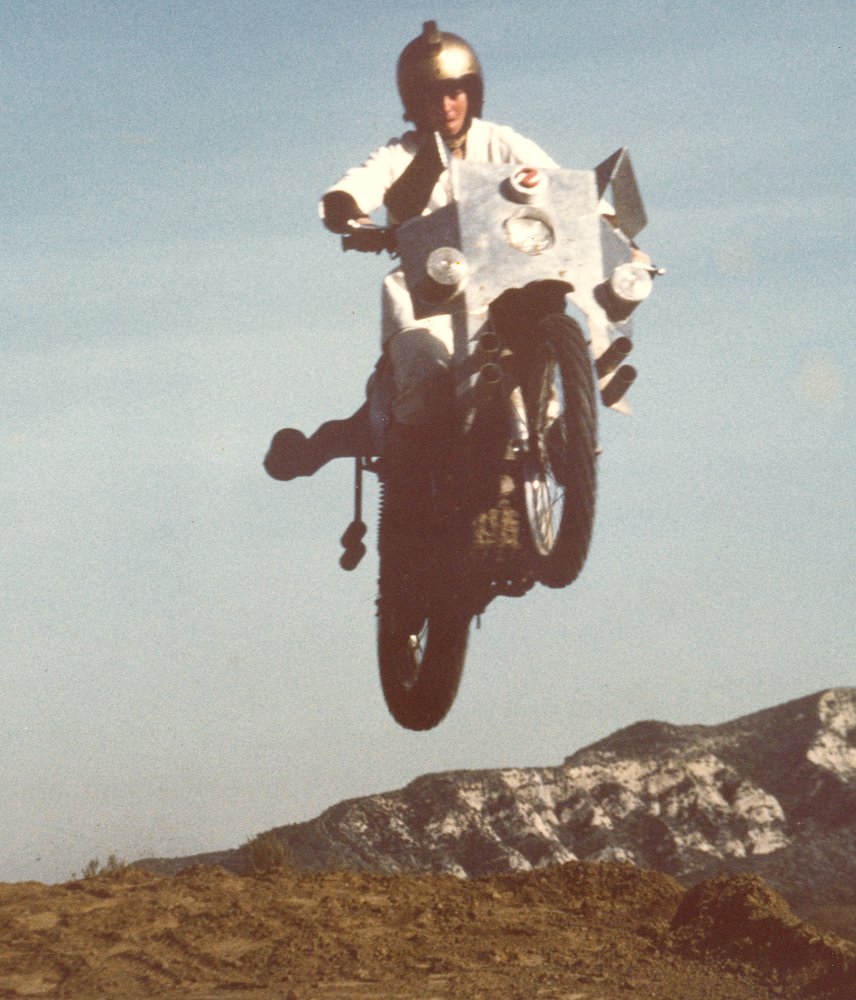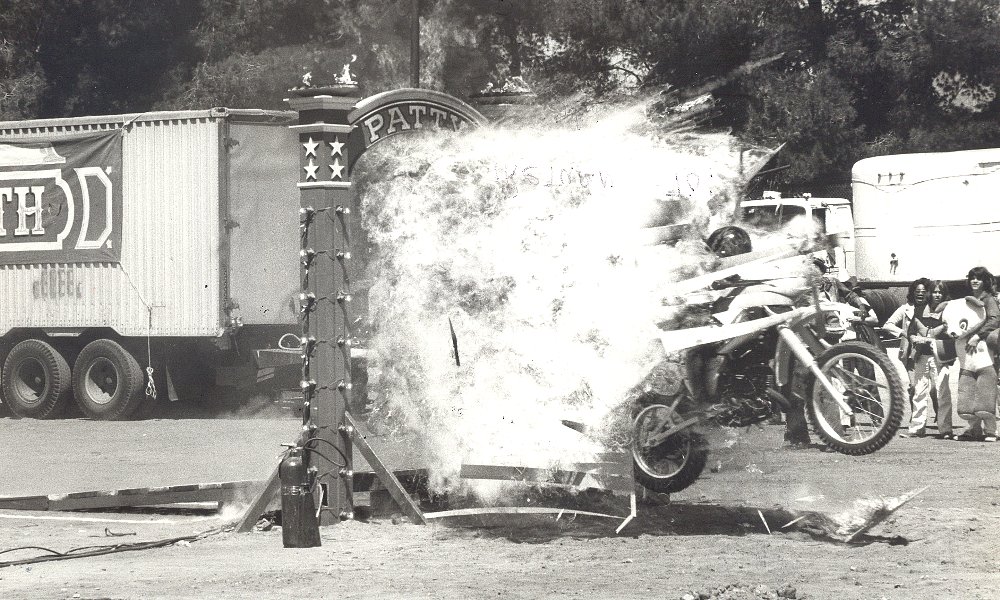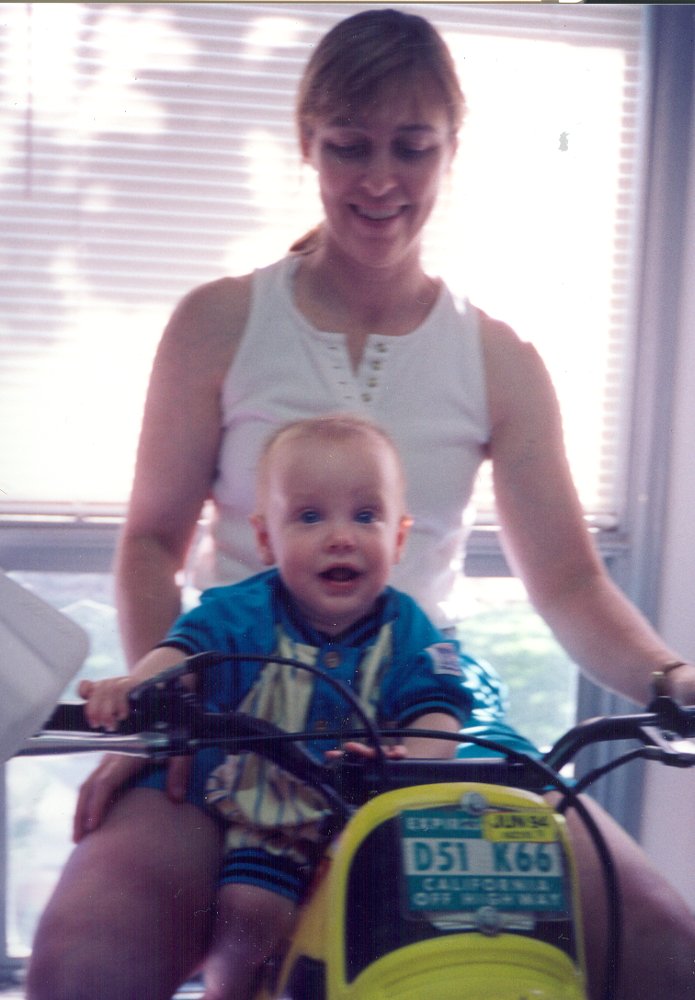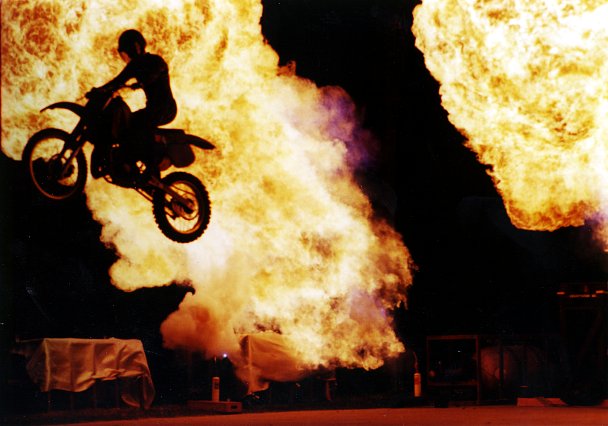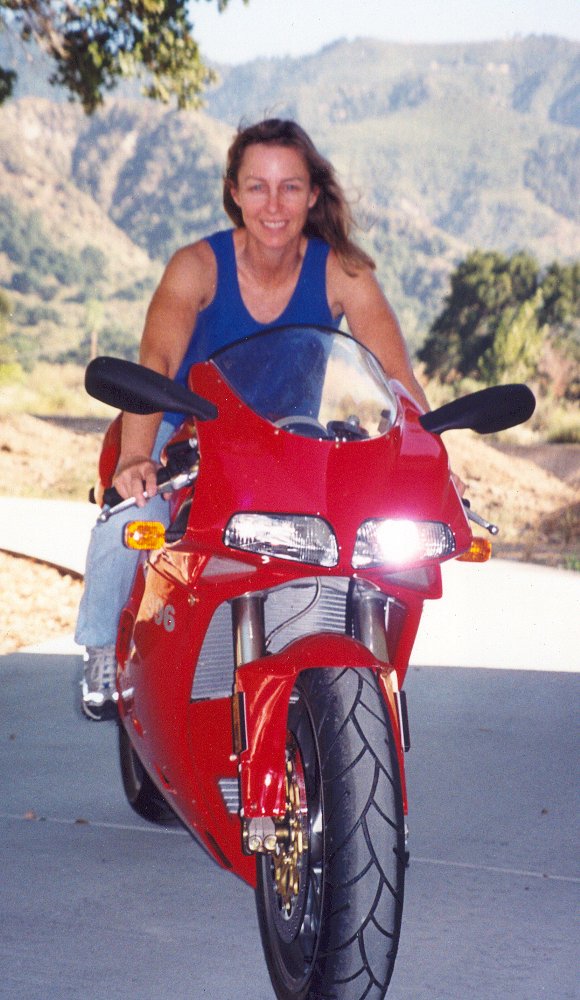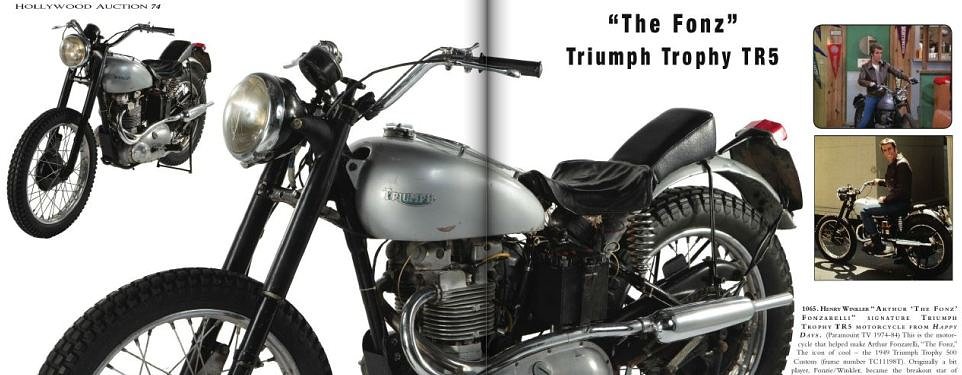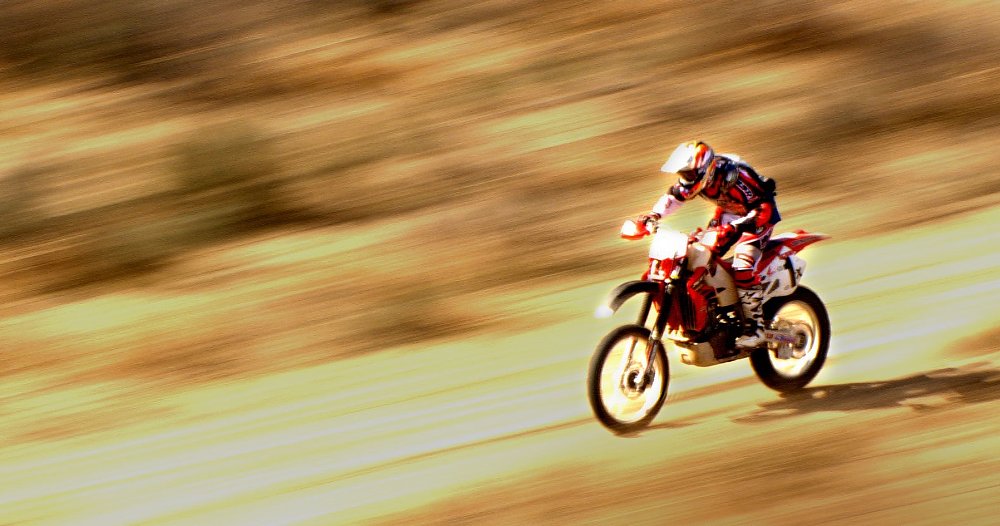Whether you know it or not, you have probably seen Debbie Evans do some badass stuff. If you’ve seen Terminator 2, The Matrix Reloaded, Batman & Robin, or any of the hundreds of films she’s been a part of, then you’ve seen parts of the epic career this 59-year-old stunt woman still leads.
Most recently, she traveled the world filming car stunts as Michelle Rodriquez's double in the just-released Fast & Furious 8, but Debbie has been stunt riding since 1978, when the then-19-year-old Factory Pro Yamaha trials rider was recruited for her first Hollywood film: Deathsport.
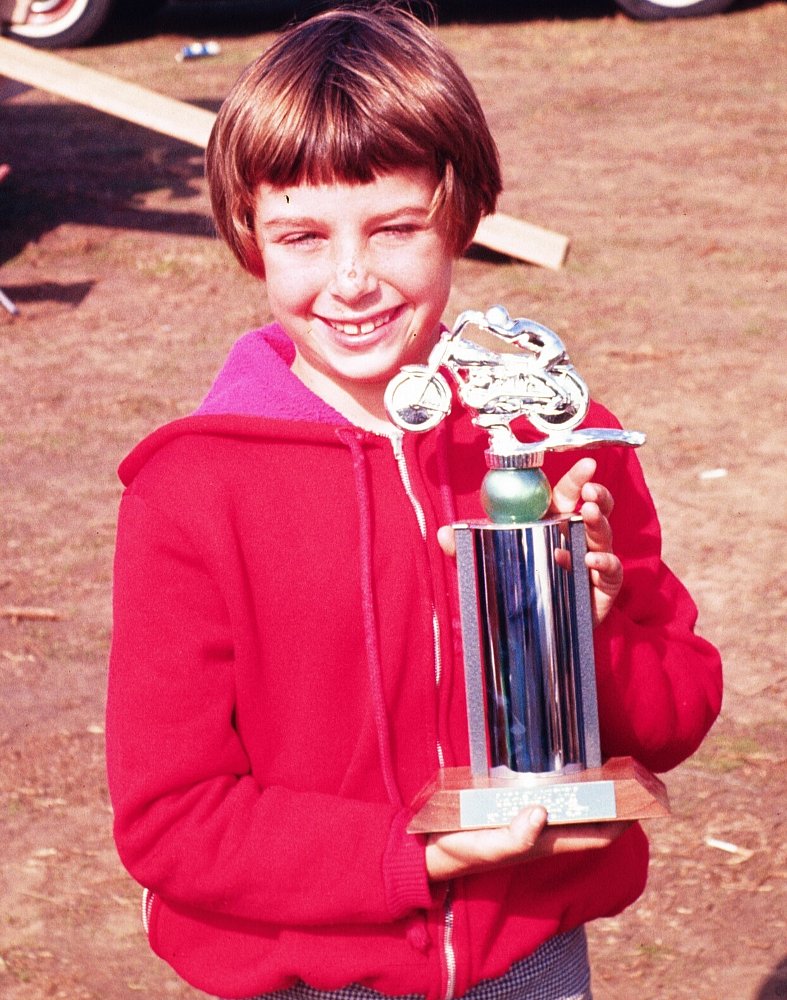
“I always did this thing where I could stand on my head on the seat of the motorcycle while it was balancing, so Yamaha would send me around when I was in high school to the Houston Astrodome for the Camel Pro Series and the Supercross races at the Pontiac Silverdome and Anaheim Stadium,” she says.
Debbie would do exhibitions at the races before they started the main events. At the Camel Pro Series Race, she performed her balancing act and then wheelied all around the stadium in front of 42,000 people and got a standing ovation.
“I was really shy, so I can't even picture how I did that at that time!” she says.
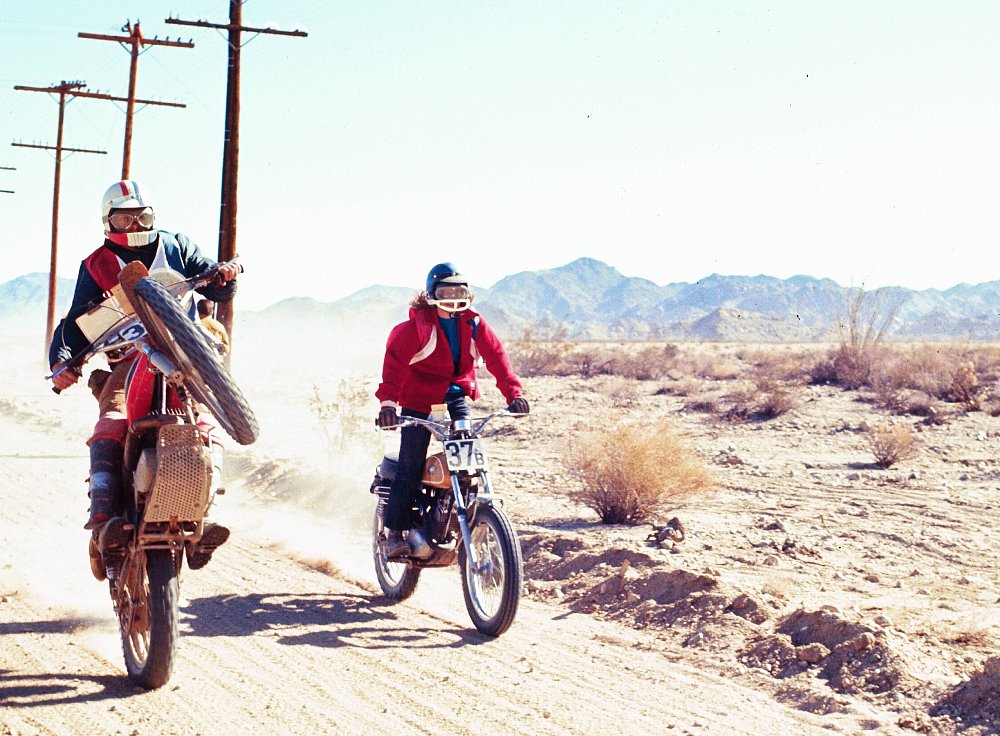
It certainly helped that she is the daughter of David Evans, also a pro motorcycle racer featured in the classic documentary On Any Sunday. It was her dad’s sponsor who helped launch Debbie’s stunt career when he recruited her to jump a 30-foot ravine on a DT400 for Deathsport.
There were few opportunities for women to perform stunts at that time. Other than Wonder Woman (whom she doubled), there really weren’t many women in major action roles requiring stunt doubles. Debbie came along just in time for all of that to change.
Hollywood stunt acting
BT: What’s a day in the life of shooting a stunt scene for say, Fast & Furious?
DE: Usually the coordinator gets all the toy cars out and has a diagram of what the streets look like or the area, and we have toy cars with all of our names on them, and we move them around to where... what's gonna happen through the scene. But most of the time, the stunt coordinator, Andy Gill, has it all set, and we just have to get our parts down. And they'll be setting cameras and doing all that, with getting the lighting right, and the grips, and all that stuff going on. And while they're doing that, we are doing slow-speed rehearsals, usually a half-speed rehearsal. And then, on this one, on Fast & Furious, since we do work as a team so well, a lot of times we'll just do a half-speed, and then go. And it's a long day, you know. We start as soon as the sun comes up, and we work until the sun goes down. And the same thing happens the next day.
BT: So it sounds like the stunt director already has sort of a vision, but you guys come in and kind of play it out?
DE: Yup. That's how it begins. You know, it's always helpful to know what the story is. If the character that you're driving for is frantic, or drunk, or if they're rushing to get somewhere, or they're just kind of... going slow for any reason, you need to know all those things. And you need to play up if the person's a good driver, or not a good driver. You know, I call it "car acting." So you give the vehicle a personality, whether you're on a motorcycle or in a car, you give it a personality.
BT: What's your favorite vehicle personality that you’ve done?
DE: Herbie.
BT: Yeah, that's immediately what I thought of when you said "personality."
DE: Herbie Fully Loaded. I had a blast on that one. And then also doubling Carrie Anne Moss in The Matrix Reloaded. That was a big one, where, you know, she's kind of robot-like, almost? I drove the Cadillac CTS and rode the Ducati 996 on that one. And it was a lot of fun. A lot of hard work, and very dangerous work, as well.
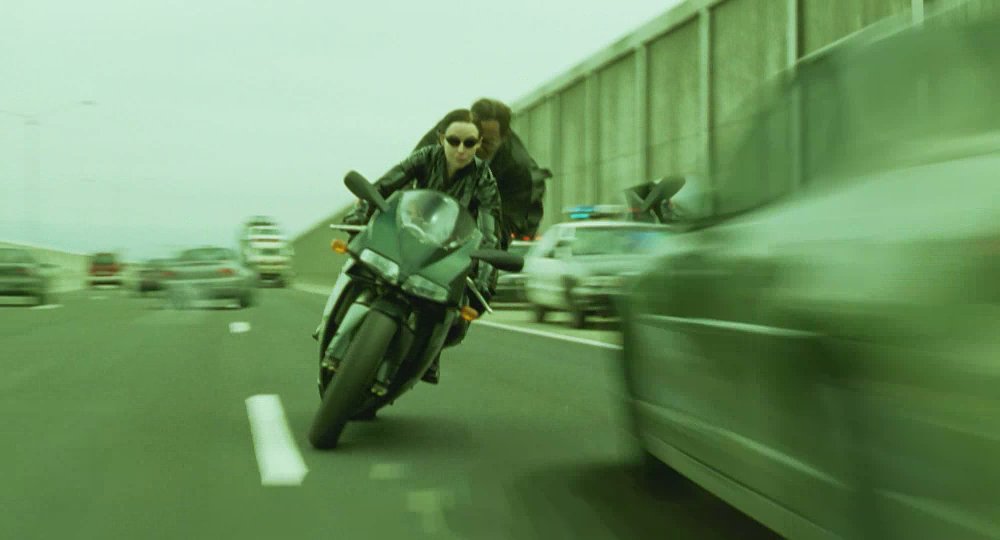
BT: There was an injury sustained on that one, is that correct? Because behind the scenes you ended up head-on with another car in one of the chase scenes?
DE: Yeah, we had four lanes of cars coming head-on, and me going against traffic, and then four of those cars were making lane changes. So I was on the bike, and, you know, it went real good, probably four times. And then we went to do it a fifth time, and one of the cars that were supposed to take a different lane, and I was supposed to take the lane that car was in, when I got to it, it hadn't moved yet.
It's amazing how fast the brain works. I actually thought I'd make a mistake, and when I looked at it later on, I went, "No!" My brain works so fast, because I realized that if I had made the move with him where he was, I would have either hit him right in the grill head-on, or if he had swerved last minute, I would have hit another car in the next lane, and it would have been just really, really awful, because I was doing about, oh, 50, and they were doing 20. So, what I did was I straightened up to split the lane, because he hadn't made the turn to get out of the way, and then he turned into me. So it was a glancing blow, but I, you know, have pictures of the side of the car, and it's a pretty big dent in the side of that car. And that was done with my leg and the foot peg.
So they took me to the hospital. What happened is I hit it, and then he straightened out, and then I low-sided. The guy that was on the back and I didn't break anything. It was all red and swollen and everything, but I didn't break anything.
So that night at the hotel I took the trash can and got some ice out of the freezer and put it in there, filled it up with water, and stuck my foot in about five times that night, for as long as I could stand it. And then left to work the next morning.
BT: That's just amazing that you walked away from that mostly unhurt. That could have been a pretty tremendous.
DE: There was one other thing that was even worse than that. There's a point where the agent morphs into the truck driver, and they're going up on the right-hand side of the truck, and it morphs into the truck driver and the truck driver swerves to try and smash them between the wall, and we had practiced it about... well, I actually rode behind the truck and I said, "Do exactly what you're gonna do. I'm gonna count to see how many seconds I can stay up in there. How many seconds I have to get out." And so every time we did it, we did it four times, and it took a good solid four beat. So if I'm counting one thousand one, one thousand two, one thousand three, one thousand four. That's how long it took every single time. Well, when we went to go, I got right up in there, and I was doing my count to make sure I was gonna be out. But I heard the rear tires screeching, and I got on the brakes as hard as I could and I went over to the right as far as I could, and the top, the back of the truck, trailer, went over my front fender, and hit the wall right in front of us. And there was just nowhere for me to go. It didn't hit the bike, but that trailer went right over the front wheel. And that's the closest I've ever come, you know? To just being... well... afterward, I got off the bike and I just felt physically ill. I felt like throwing up, and my body was shaking. It was that close.
BT: I would have definitely thrown up. This is the film that made me go looking to see who was the rider behind this chase scene, and that's how I found out about you.
DE: Oh really? That's interesting. Because you know, I'm really proud of the work. We worked for three months on that. We were at the Alameda Naval Air Station up in Oakland that had been shut down, and they actually built an entire freeway on the runway. It was pretty amazing.
BT: What’s another one of your favorite stunt scenes?
They had a semi truck trailer there so I just picked up the front wheel and banked it off the side of the semi truck and around Steve Martin and so it was really fun to be able to use those trials riding skills that I had practiced for so many years in the movie.
BT: You’ve gotten some serious acclaim. What are some of your biggest bragging rights?
DE: I got an award called the Helen Gibson. It's like the Pioneering Stunt Woman award. I have seven Torres World stunt awards, which is I think more than any of the guys. I was inducted into the American Motorcycle Hall of Fame in 2003, and that I am very, very proud of. I've been nominated for Screen Actors Guild Awards and Emmys. The Emmy was an ensemble. The group of people that I was inducted with for the AMA was amazing.
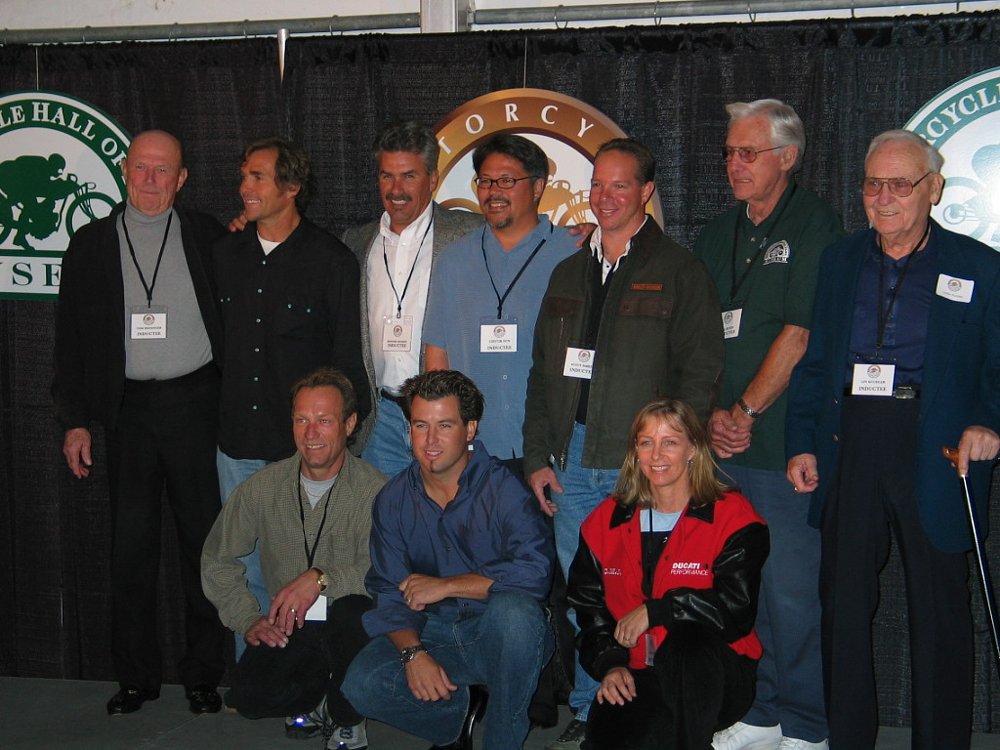
BT: Do you think you’ll keep doing this for as long as your body allows?
I still love it and as long as I love it and my reactions are good, I don't think there's any reason to stop.
Tricks of the trade
BT: How did you do the headstand on the seat stunt?
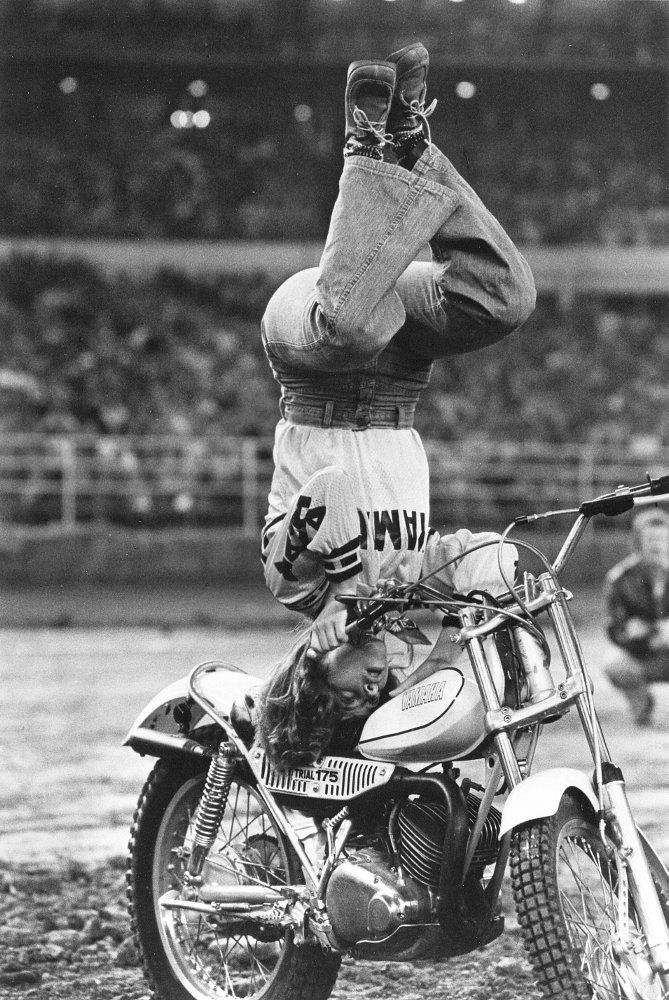
BT: What sorts of things have you learned to do prevent a foreseeable crash from going out of control? What advice would you give to riders?
DE: I really just wish that everyone on the street had to first ride a dirt bike. It's so important. I hate when I see somebody who can barely ride go to the dealership and get on a motorcycle and take off down the road.
On the dirt, in a very short time you get all of the coordination of the throttle and the clutch and the brake and shifting gears and what all that stuff does and then the different terrain and understanding when the rear wheel slides, what your body does counter-weighting and all of those things. Counter steering. You just don't get that kind of training if you're on the street all the time. That's what helps you when you get into those situations where, "Oh god, it's do or die!"
If you're ever in the spot where you do see a car that's turned in front of you and you know there's no way you're going to stop, before you hit that car jump as high and far as you can straight into the air. If somebody pulls out in front of you from a parking lot or something, if you know you can't stop, try to get as light on that thing and get up as high as you can right before impact. What happens is if you hit with the front wheel and then the bars hit your legs and break your femurs then it's just a bad deal. We do a lot stunts like that where we hit the side of cars and we usually score the handlebars so that they break at least. We cut them from the back side half way through or three quarters of the way through. We usually put high foot pegs on them so that we can jump up and get over the car.
Industry life, personal life
BT: What is it like now for young women trying to break into this industry?
DE: It's actually easier to get into now because when I got in you either had to have a Screen Actors Guild card or you had to know somebody who could get you in and I didn't have either one.
It's a lot easier now but it's still hard once you get in because there's so much competition. If you have a specialty where you're top-notch, then you've got something that people go to you for. Then you can branch out into the other areas. There's a lot of people who come out from someplace else and they end up making a go of it and there's people who struggle and struggle and struggle and never seem to get anywhere, so that's kind of the whole Hollywood thing.
BT: Okay. What's your favorite motorcycle?
Takeaways
Stunt acting is without a doubt what Debbie was born to do, and there are few others out there with the guts and skills to do it to the extremes that she does. Our scheduled hour interview turned into almost three, and before we were even half done, I felt like I was talking to a new friend. I’m inspired by her drive to push limits and impressed and amazed that throughout a 40-year career her hospital records aren’t more extensive. She is living proof that keeping a lust for life and an openness to forever developing your techniques are qualities that will never do you wrong.

 Membership
Membership


